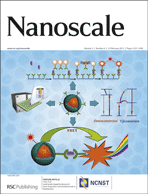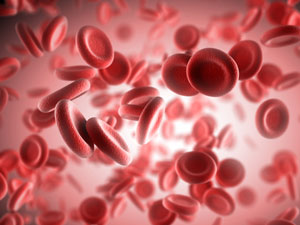
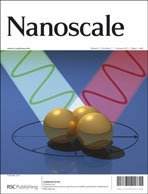 Nanoscale Advisory Board Member Prof. Zhiqun Lin is an expert in nanostructured polymer solar cells and dye-sensitized solar cells, and has selected some of his favorite articles recently published in these fields in Nanoscale.
Nanoscale Advisory Board Member Prof. Zhiqun Lin is an expert in nanostructured polymer solar cells and dye-sensitized solar cells, and has selected some of his favorite articles recently published in these fields in Nanoscale.
Read our Editor’s choice selection today:
Reviews:
Confocal ultrafast pump–probe spectroscopy: a new technique to explore nanoscale composites
Tersilla Virgili , Giulia Grancini , Egle Molotokaite , Inma Suarez-Lopez , Sai Kiran Rajendran , Andrea Liscio , Vincenzo Palermo , Guglielmo Lanzani , Dario Polli and Giulio Cerullo
DOI: 10.1039/C2NR11896C
Conjugated polymers/semiconductor nanocrystals hybrid materials preparation, electrical transport properties and applications
Peter Reiss , Elsa Couderc , Julia De Girolamo and Adam Pron
DOI: 10.1039/C0NR00403K
Recent advances in hybrids of carbon nanotube network films and nanomaterials for their potential applications as transparent conducting films
Seung Bo Yang , Byung-Seon Kong , Dae-Hwan Jung , Youn-Kyoung Baek , Chang-Soo Han , Sang-Keun Oh and Hee-Tae Jung
DOI: 10.1039/C0NR00855A
Semiconductor nanostructure-based photovoltaic solar cells
Genqiang Zhang , Scott Finefrock , Daxin Liang , Gautam G. Yadav , Haoran Yang , Haiyu Fang and Yue Wu
DOI: 10.1039/C1NR10152H
Atomic layer deposition for nanofabrication and interface engineering
Monan Liu, Xianglin Li, Siva Krishna Karuturi, Alfred Iing Yoong Tok and Hong Jin Fan
DOI: 10.1039/C2NR11875K
Oxide nanowires for solar cell applications
Qifeng Zhang, Supan Yodyingyong, Junting Xi, Daniel Myers and Guozhong Cao
DOI: 10.1039/C2NR11595F
Nanoengineering and interfacial engineering of photovoltaics by atomic layer deposition
Jonathan R. Bakke, Katie L. Pickrahn, Thomas P. Brennan and Stacey F. Bent
DOI: 10.1039/C1NR10349K
TiO2 nanotubes and their application in dye-sensitized solar cells
Poulomi Roy, Doohun Kim, Kiyoung Lee, Erdmann Spiecker and Patrik Schmuki
DOI: 10.1039/B9NR00131J
Oxide nanowire networks and their electronic and optoelectronic characteristics
Nripan Mathews, Binni Varghese, Cheng Sun, Velmurugan Thavasi, Björn P. Andreasson, Chornghaur H. Sow , Seeram Ramakrishna and Subodh G. Mhaisalkar
DOI: 10.1039/C0NR00285B
Original research:
Efficient Light Trapping in Inverted Polymer Solar Cells by Randomly Nanostructured Electrode Using Monodispersed Polymer Nanoparticles
Bumjoon Kim , Dongjin Kang , Hyunbum Kang , Changsoon Cho , Kihyun Kim , Seonju Jeong and Jung-Yong Lee
DOI: 10.1039/C2NR33160H
Solution-processed, nanostructured hybrid solar cells with broad spectral sensitivity and stability
Renjia Zhou , Ying Zheng , Lei Qian , Yixing Yang , Paul H. Holloway and Jiangeng Xue
DOI: 10.1039/C2NR30210A
Light concentration and redistribution in polymer solar cells by plasmonic nanoparticles
Jinfeng Zhu , Mei Xue , Ryan Hoekstra , Faxian Xiu , Baoqing Zeng and Kang L. Wang
DOI: 10.1039/C2NR11920J
Charge photogeneration in hybrid solar cells: A comparison between quantum dots and in situ grown CdS
Luke X. Reynolds , Thierry Lutz , Simon Dowland , Andrew MacLachlan , Simon King and Saif A. Haque
DOI: 10.1039/C2NR12081J
Exciton diffusion and charge transfer dynamics in nano phase-separated P3HT/PCBM blend films
Hai Wang , Hai-Yu Wang , Bing-Rong Gao , Lei Wang , Zhi-Yong Yang , Xiao-Bo Du , Qi-Dai Chen , Jun-Feng Song and Hong-Bo Sun
DOI: 10.1039/C0NR01002B
Annealing effects on the photovoltaic performance of all-conjugated poly(3-alkylthiophene) diblock copolymer-based bulk heterojunction solar cells
Ming He , Wei Han , Jing Ge , Weijie Yu , Yuliang Yang , Feng Qiu and Zhiqun Lin
DOI: 10.1039/C1NR10293A
Synergistic effect of surface plasmon resonance and constructed hierarchical TiO2 spheres for dye-sensitized solar cells
Yumin Liu, Haowei Zhai, Feng Guo, Niu Huang, Weiwei Sun, Chenghao Bu, Tao Peng, Jikang Yuan and Xingzhong Zhao
DOI: 10.1039/C2NR31954C
Large-scale synthesis of Cu2SnS3 and Cu1.8S hierarchical microspheres as efficient counter electrode materials for quantum dot sensitized solar cells
Jun Xu, Xia Yang, Tai-Lun Wong and Chun-Sing Lee
DOI: 10.1039/C2NR31724A
Densely aligned rutile TiO2 nanorod arrays with high surface area for efficient dye-sensitized solar cells
Miaoqiang Lv, Dajiang Zheng, Meidan Ye, Lan Sun, Jing Xiao, Wenxi Guo and Changjian Lin
DOI: 10.1039/C2NR31431B
Highly efficient and completely flexible fiber-shaped dye-sensitized solar cell based on TiO2 nanotube array
Zhibin Lv, Jiefeng Yu, Hongwei Wu, Jian Shang, Dan Wang, Shaocong Hou, Yongping Fu, Kai Wu and Dechun Zou
DOI: 10.1039/C2NR11532H
Dye-sensitized solar cells based on a nanoparticle/nanotube bilayer structure and their equivalent circuit analysis
Xukai Xin, Jun Wang, Wei Han, Meidan Ye and Zhiqun Lin
DOI: 10.1039/C2NR11617K
Graphene supported nickel nanoparticle as a viable replacement for platinum in dye sensitized solar cells
Reeti Bajpai, Soumyendu Roy, Neha kulshrestha, Javad Rafiee, Nikhil Koratkar and D. S. Misra
DOI: 10.1039/C2NR11127F
Nanostructure control of graphene-composited TiO2 by a one-step solvothermal approach for high performance dye-sensitized solar cells
Ziming He, Guanhong Guai, Jing Liu, Chunxian Guo, Joachim Say Chye Loo, Chang Ming Li and Timothy Thatt Yang Tan
DOI: 10.1039/C1NR11300C
Preparation of TiO2 nanowires/nanotubes using polycarbonate membranes and their uses in dye-sensitized solar cells
Dong Kyu Roh, Rajkumar Patel, Sung Hoon Ahn, Dong Jun Kim and Jong Hak Kim
DOI: 10.1039/C1NR10525F
If you enjoyed this selection, you may also be interested in our collection of recent Nanoscale articles on energy research.


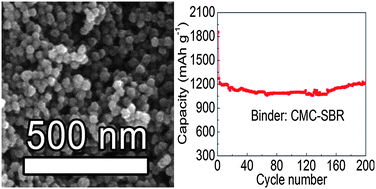









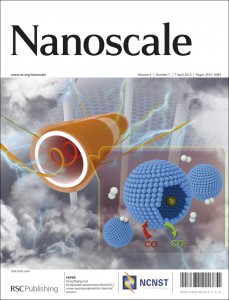
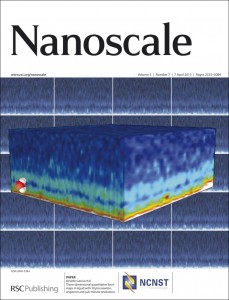
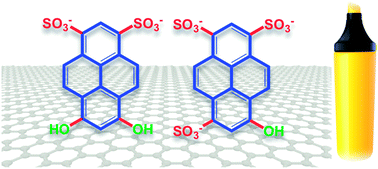
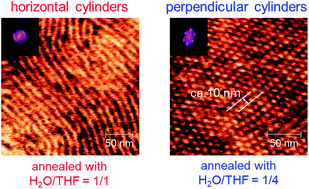
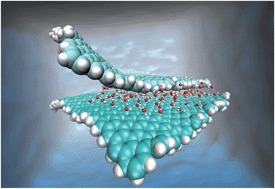 Wenping Lv and Ren’an Wu from the Dalian Institute of Chemical Physics have investigated the aggregation of two graphene nanosheets in water and the role of the interfacial water monolayer in the aggregation mechanism.
Wenping Lv and Ren’an Wu from the Dalian Institute of Chemical Physics have investigated the aggregation of two graphene nanosheets in water and the role of the interfacial water monolayer in the aggregation mechanism.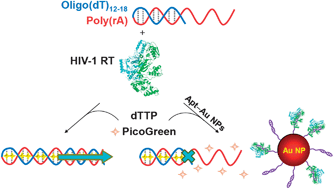 Gold nanoparticles functionalised with aptamers have been found to be highly effective inhibitors for human immunodeficiency virus type 1 reverse transcriptase. The nanoparticles particles have been shown to reduce the ability of the HIV virus to reproduce and infect new cells.
Gold nanoparticles functionalised with aptamers have been found to be highly effective inhibitors for human immunodeficiency virus type 1 reverse transcriptase. The nanoparticles particles have been shown to reduce the ability of the HIV virus to reproduce and infect new cells.
